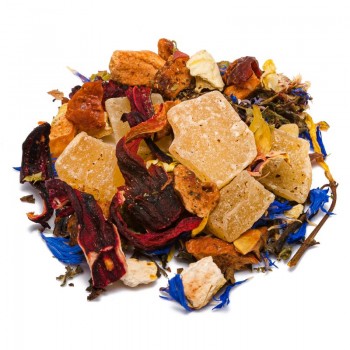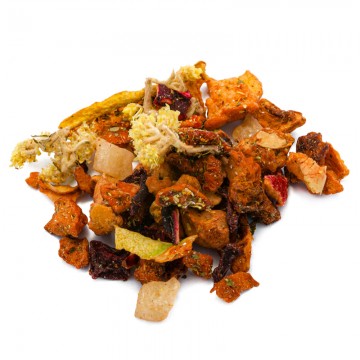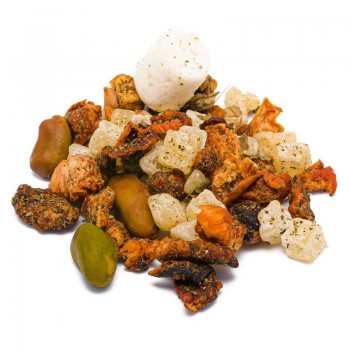The fruity freshness of the peach goes perfectly with the spicy and spicy ginger, in a combination that is also enhanced thanks to other ingredients. The resulting infusion is thirst-quenching and rich in flavour, ideal cold for a regenerating break on long summer afternoons. The penetrating aroma of ginger blends with the enveloping sweetness of peach, in a refined blend with a delicate, summery taste. In winter, it becomes a fragrant and beneficial combination for the airways. By mixing pungent ginger with the sweet character of fruit (apple, melon, orange) and floral notes of hibiscus, peach and rose, a robust yet delicately flavored infusion is born. This delicious blend enhances the natural fruity undertone, with a hint enhanced by pepper and natural flavors. So much goodness becomes a perfect "drink and eat", with edible ingredients after sipping the infusion.
Ginger and peach infusion: properties and benefits
The peach and ginger infusion contains nutritional principles that promote digestion and help purify the body. Hibiscus, orange and ginger are beneficial for the transit of food in the gastrointestinal system and counteract states of nausea and indigestion. They help relieve and associated problems, such as bloating and flatulence. Together with peach flowers and melon they help the regularity and functionality of the urinary tract, promoting the drainage of excess fluids in the body. Furthermore, ginger gives its thermogenic effect, which means it produces heat and allows the body to burn calories more easily. The ingredients make different mineral salts and substances, including calcium and potassium, which make the infusion remineralising and restorative in summer. In particular, dog rose has a supporting action and elements such as ginger and hibiscus are excellent antioxidants. They facilitate the protection of our cells from free radicals, substances responsible for aging.
From a well-being point of view, moreover, hibiscus supports the regularity of blood pressure while ginger helps in cardiovascular function and normal blood circulation. The active ingredients in ginger, called gingerols, promote free blood flow, improving circulation – this explains why in oriental medicine ginger has been used in the past as a stimulant aphrodisiac. By taking this hot infusion, irritations of the oropharyngeal mucosa are alleviated in winter thanks to the action of ginger, peach flowers and rose; helping the functionality of the respiratory system.
Origins and history of cultivation
Ginger derives from the plant of the same name, probably originating from south-east Asia and present in the eastern territory for millennia. The history of ginger dates back approximately 5,000 years, and its medicinal and culinary use was widespread in Southeast Asia, India and China. There are hundreds of ornamental varieties of ginger, whose common point is the green, pointed leaves. It is the part underground, the rhizome, that is used to obtain the spice we know. It is extracted from the so-called root, i.e. from the underground rhizome (it grows like a potato). Ginger can be used fresh or dried and then ground to obtain the yellowish powder used in cooking. Like many other spices, ginger was rare and expensive in the past, and we know that from the Middle Ages onwards it was also in great demand in the West. It was introduced by Arab merchants, who sold it as a prized spice and for the creation of special dishes. Over the centuries it became very popular, so much so that it flavored beer (in Great Britain, from which ginger ale derives), gingerbread, Thai curry and Moroccan tajine. Today the producing countries are mainly India, China, Fiji, Indonesia and Peru.
The peach tree is a tree that comes from Asia and was first cultivated in China, where it originated at least 7,000 years ago. It is believed that the tree and its fruit then arrived in the Middle East via trade routes that extended to Turkey and Iran (Persia). Its name derives, in fact, from the European belief that this tree was native to Persia. In fact, peach comes from the Greek Persikon malon for "Persian apple" and from the Latin malum Persicum. Over the centuries, cultivation has spread to Europe and throughout North Africa, and finally the peach tree was introduced to America in the mid-1500s. Over time, the evolution from wild fishing to modern fishing developed, and today there are hundreds of variety in the world. Smooth-skinned, hairless nectarines, in particular, derive from a variety of peach treeshe may have been born as a mutant within the peach orchards.
Fruits and flowers: what our infusion contains
Ginger is a flowering plant, the Zingiber officinale of the Zingiberaceae family. it loves mild climates and its cultivation is more effective in tropical and subtropical climates. It thrives in lots of rainfall, loves rich volcanic soils and needs excellent drainage. The spice is obtained from the rhizome (root), while it shows lanceolate leaves and white or yellow flowers on the surface.
Peaches belong to the Prunus persica (L.) Batsch tree. belonging to the subfamily Prunoideae (Rosaceae family). Peach trees rarely reach 6 meters in height, display glossy green leaves and pink - occasionally white flowers. Some varieties of the plant are grown for the succulent, sweet pulp of the fruits. Peaches are usually red with yellow shades and various shades.
The Malus domestica plant of the Rosaceae family is the one that produces apples. The tree is native to Asia but has now spread throughout the planet. The fruits vary in color and in many varieties, which distinguish apples by color, size and consistency of the pulp.
The hibiscus plant is Hibiscus sabdariffa, of the Malvaceae family. It grows in tropical and subtropical regions around the world. The calyx and flowers are used as flavourings, as colorants and in herbal medicine for the preparation of hibiscus tea.
The sweet orange tree is Citrus x sinensis belonging to the Rutaceae family. It probably originated as a hybrid between the pomelo and the mandarin in China. Numerous varieties of orange have been developed over the centuries, and sweet oranges are distinguished from bitter oranges.
The Rose is a perennial plant of the Rosaceae family. There are over three hundred species and thousands of cultivars of this plant, which can be in the form of erect shrubs, climbing, thorny or not. The flowers change in shape, size and color from white to yellow to dark red. The dog rose is a variety of rose very widespread in Italy, it is also called scrub rose or wild rose. It gives rosehip, a red false fruit with a fleshy consistency. It contains the achenes, the true fruits, inside.
Pepper comes from the Piper nigrum plant, a climber of the Piperaceae family. The spice is made from the fruits, which grow on the plant as drupes – sometimes called peppercorns. They are small and have a strong aromatic smell.
Nutritional values of ginger and peach infusion
The infusion is a source of antioxidants and mineral salts released by the ingredients (including phosphorus, potassium, magnesium). Among the active ingredients there are acids (malic, citric and tartaric acid), tannins and hibiscus components, anthocyanins. Other beneficial antioxidant groups are those of ginger, which provides the compounds gingerols and shogaols.
How to use the ingredients in the infusion
The infusion is obtained by placing approximately 3-5 grams of the ginger and peach mixture in a cup (250 ml), with water at 100 °C.
Leave to infuse for 10 to 12 minutes before drinking. Add honey or sugar, if desired.
Ginger and peach infusion: side effects and contraindications
To avoid unwanted effects it is necessary to respect the recommended doses and not exceed the consumption of the infusion. Excessive intake can cause diarrhea, stomach pain, nausea, headache.

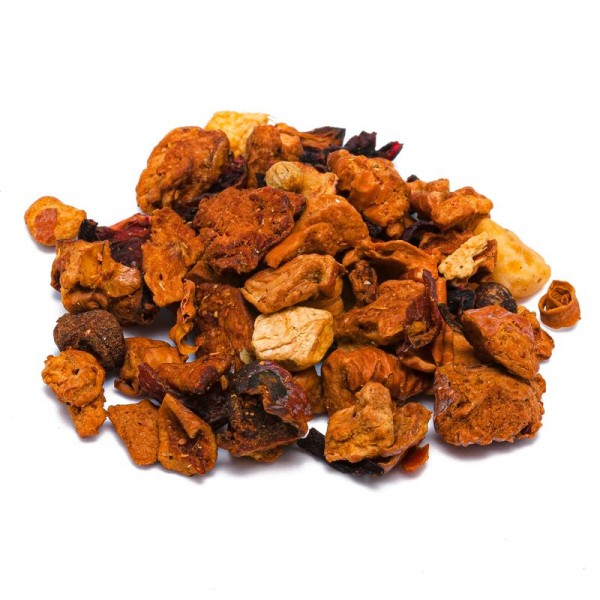









 No reward points for this product.
No reward points for this product.
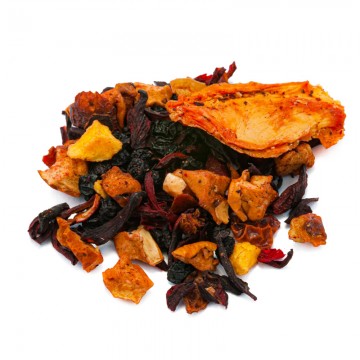
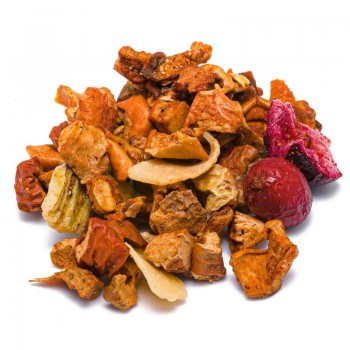
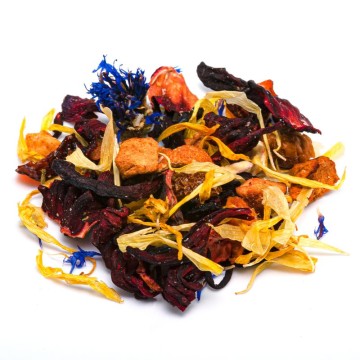
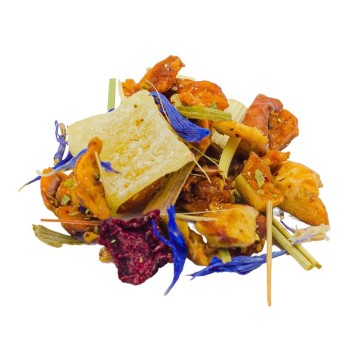
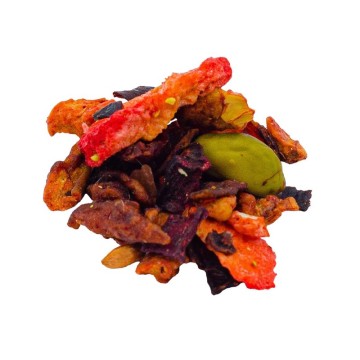
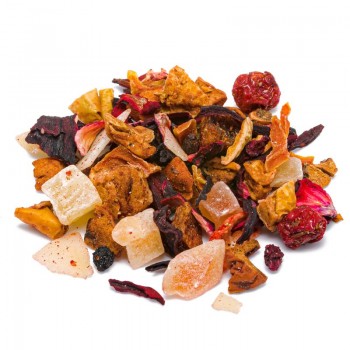
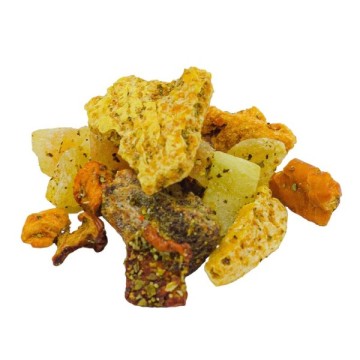
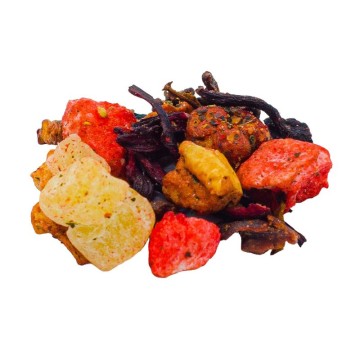
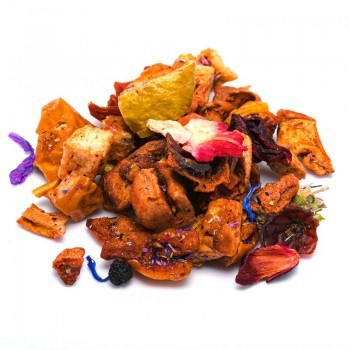
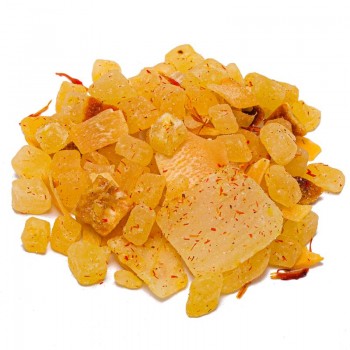
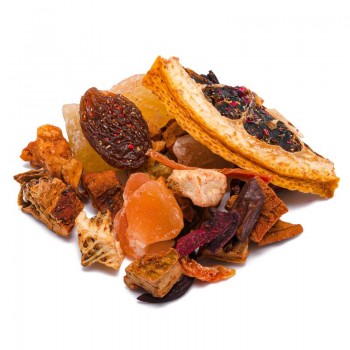
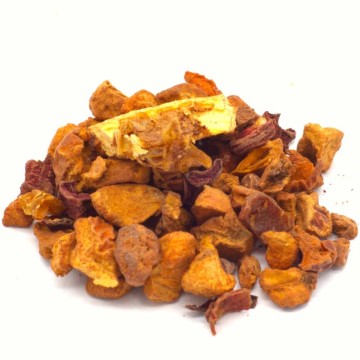
![infuso frutti rossi [Natura d'Oriente]](https://www.naturadoriente.com/3542-home_default/infusion-of-red-fruits.jpg)
